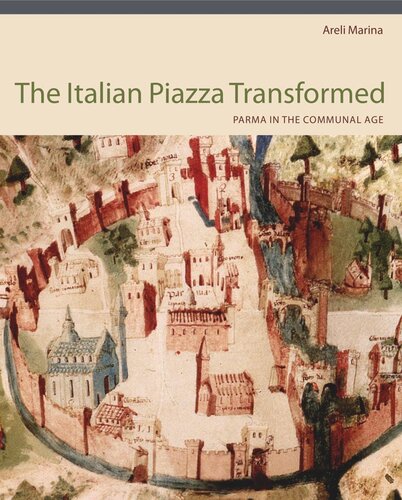

Most ebook files are in PDF format, so you can easily read them using various software such as Foxit Reader or directly on the Google Chrome browser.
Some ebook files are released by publishers in other formats such as .awz, .mobi, .epub, .fb2, etc. You may need to install specific software to read these formats on mobile/PC, such as Calibre.
Please read the tutorial at this link: https://ebookbell.com/faq
We offer FREE conversion to the popular formats you request; however, this may take some time. Therefore, right after payment, please email us, and we will try to provide the service as quickly as possible.
For some exceptional file formats or broken links (if any), please refrain from opening any disputes. Instead, email us first, and we will try to assist within a maximum of 6 hours.
EbookBell Team

0.0
0 reviewsDuring the long thirteenth century, the cities of northern Italy engendered a vital and distinctive civic culture despite constant political upheaval. In The Italian Piazza Transformed, Areli Marina examines the radical transformation of Parma’s urban center in this tumultuous period by reconstructing the city’s two most significant public spaces: its cathedral and communal squares. Treating the space of these piazzas as attentively as the buildings that shape their perimeters, she documents and discusses the evolution of each site from 1196, tracing their construction by opposing political factions within the city’s ruling elite. By the early fourteenth century, Parma’s patrons and builders had imposed strict geometric order on formerly inchoate sites, achieving a formal coherence attained by few other cities.
Moreover, Marina establishes that the piazzas’ orderly contours, dramatic open spaces, and monumental buildings were more than grand backdrops to civic ritual. Parma’s squares were also agents in the production of the city-state’s mechanisms of control. They deployed brick, marble, and mortar according to both ancient Roman and contemporary courtly modes to create a physical embodiment of the modern, syncretic authority of the city’s leaders. By weaving together traditional formal and iconographic approaches with newer concepts of the symbolic, social, and political meanings of urban space, Marina reframes the complex relationship between late medieval Italy’s civic culture and the carefully crafted piazzas from which it emerged.